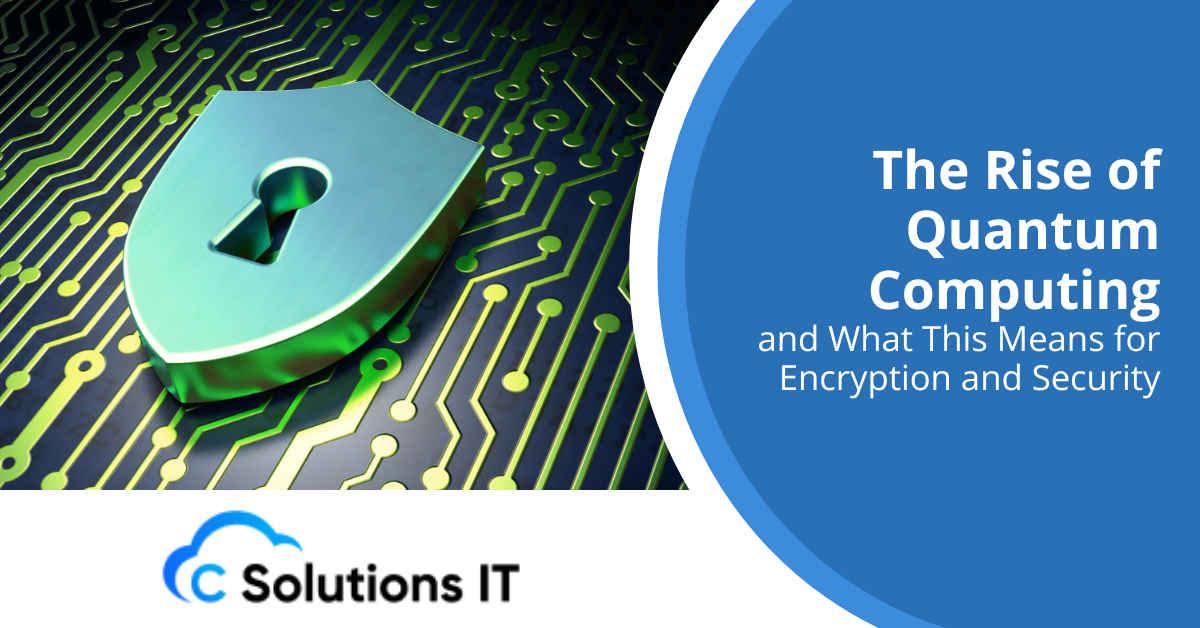
The Rise of Quantum Computing and Its Security Implications
Quantum computing, once a theoretical concept confined to the realms of physics, is rapidly transitioning into a tangible reality. This emerging technology promises to revolutionize various fields, from medicine and materials science to finance and artificial intelligence. However, alongside its immense potential, quantum computing poses a significant threat to current cybersecurity infrastructure. This article delves into the basics of quantum computing, its potential impact on security, and the steps being taken to prepare for a post-quantum world.
Understanding Quantum Computing
Classical computers store information as bits, representing either a 0 or a 1. Quantum computers, on the other hand, utilize qubits. Qubits leverage the principles of quantum mechanics, specifically superposition and entanglement, to represent 0, 1, or a combination of both simultaneously. This allows quantum computers to perform certain calculations exponentially faster than classical computers.
- Superposition: A qubit can exist in multiple states at once, unlike a bit which is either 0 or 1.
- Entanglement: Two or more qubits can become linked together, even when separated by vast distances. The state of one instantly influences the state of the others.
While quantum computers aren't meant to replace classical computers for all tasks, they excel at specific problems that are intractable for even the most powerful supercomputers today. These include:
- Drug discovery and materials science
- Optimization problems (e.g., logistics, finance)
- Breaking modern encryption algorithms
The Threat to Current Cryptography
The security of much of our digital world relies on the difficulty of certain mathematical problems for classical computers. Specifically, algorithms like RSA and ECC (Elliptic Curve Cryptography) are widely used for secure communication and data protection. These algorithms are based on the assumption that factoring large numbers or solving the discrete logarithm problem is computationally infeasible for classical computers.
However, quantum computers, utilizing Shor's algorithm, can efficiently solve these problems. This means that a sufficiently powerful quantum computer could break many of the encryption methods currently used to protect sensitive data, including:
- Secure websites (HTTPS)
- Digital signatures
- Virtual Private Networks (VPNs)
- Cryptocurrencies
The timeline for when a "cryptographically relevant quantum computer" (CRQC) will be available is uncertain, but experts predict it could be within the next 10-20 years. The threat isn't just about the future; data encrypted today could be stored and decrypted later when quantum computers become powerful enough.
Post-Quantum Cryptography (PQC)
Recognizing the looming threat, researchers are actively developing Post-Quantum Cryptography (PQC) – cryptographic algorithms that are believed to be resistant to attacks from both classical and quantum computers. These algorithms are based on different mathematical problems that are thought to be hard for quantum computers to solve.
The National Institute of Standards and Technology (NIST) has been leading a global effort to standardize PQC algorithms. In 2022, NIST announced the first set of PQC algorithms selected for standardization:
| Algorithm Category | Selected Algorithms |
|---|---|
| Key-Establishment | CRYSTALS-Kyber |
| Digital Signature | CRYSTALS-Dilithium, FALCON, SPHINCS+ |
These algorithms fall into several categories, including:
- Lattice-based cryptography: Based on the difficulty of solving problems involving lattices.
- Code-based cryptography: Based on the difficulty of decoding general linear codes.
- Multivariate cryptography: Based on the difficulty of solving systems of multivariate polynomial equations.
- Hash-based signatures: Based on the security of cryptographic hash functions.
Preparing for the Quantum Era
Transitioning to PQC is a complex undertaking that requires significant effort from organizations and individuals alike. Here are some key steps:
- Inventory cryptographic assets: Identify all systems and data that rely on vulnerable cryptographic algorithms.
- Risk assessment: Evaluate the potential impact of a quantum attack on your organization.
- Prioritize migration: Focus on protecting the most critical data and systems first.
- Implement PQC algorithms: Integrate PQC algorithms into your systems and applications.
- Hybrid approaches: Combine classical and PQC algorithms for added security during the transition period.
- Stay informed: Keep up-to-date with the latest developments in PQC and quantum computing.
Resources for further information:
Conclusion
The rise of quantum computing presents a fundamental challenge to the security of our digital infrastructure. While the threat is not immediate, proactive preparation is crucial. By understanding the risks and embracing PQC, we can mitigate the potential impact of quantum attacks and ensure a secure future in the quantum era.
